
05 Mar Spirit Plants and Prana: Breathing Life into Spirituality
In many cultures, spirit plants play an essential role in our spiritual journey. These beneficial allies have the power to heal and purify, and they serve as teachers and guides to inner peace and harmony. From ancient traditions to modern spiritual practices, the symbolic significance and energetic impact of plants are at the heart of mindful living.
I’m happy to share some tips and tricks to help you connect with these wonderful beings in your quest for spiritual awakening.
What is the spiritual significance of plants? In the first place, they attract positive energy and provide spiritual protection from negative energies. Through their ritual use and integration into daily life, plants can help deepen our connection to nature in this urbanized world. As living beings, plants have their own energy that can resonate with the human energy system, facilitating healing, spiritual development and inner balance.

Many plants are also associated with symbolic meanings derived from ancient belief systems, myths, folk traditions, and spiritual teachings. Over time, they have become universally accepted symbols, passed down from generation to generation. For example, the rose is a symbol of love and beauty, while lavender is a symbol of purity and tranquility. These symbolic meanings can be important in how we use and interpret these plants in our daily lives and spiritual practices.
Did You Know?
The Global Garden of Spiritual Plants
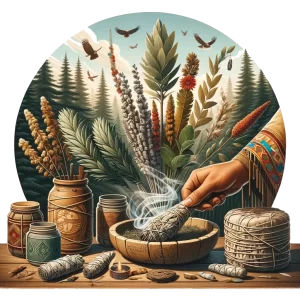
Native American traditions emphasize the use of plants such as sage, tobacco, cedar, and sacred grass in cleansing and protection rituals. These plants are used as incense to drive away negative energies and purify spaces, people, and objects.
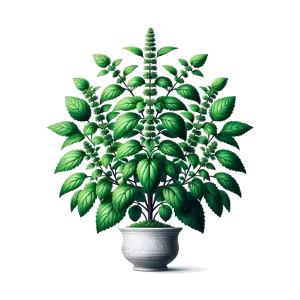
On the Indian subcontinent, tulsi (holy basil) is especially important in Hindu traditions. It is revered in homes and temples as a symbol of protection, purity, and spiritual progress. The Tulsi plant is often kept in the home to promote positive energy and spiritual protection.

In shamanism, present in many ancient cultures, a deep connection with plants is essential for healing and spiritual journeys. Shamans often use psychoactive plants such as ayahuasca or psilocybin mushrooms to connect with the spiritual world and bring healing to their community.
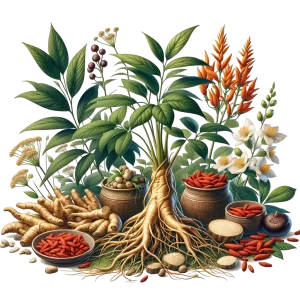
In traditional Chinese medicine, plants are used not only for medicinal purposes, but also to restore the balance of chi/qi (life force) and maintain mind-body harmony. Plants such as ginseng and goji berries are used for their spiritual and physical well-being properties.

In the Yoruba religion of West Africa and in African-American religions derived from it, such as Santería and Candomblé, plants also play an important role in rituals and healing. In these practices, sacred plants such as bay leaves are used for protection and purification.
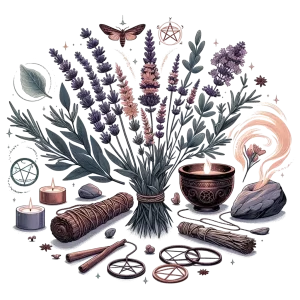
In modern Pagan and Wiccan traditions, the use of plants such as lavender, rosemary, and sage to promote protection, purification, love, and well-being is common. As part of rituals and spells, plants help to shape and direct energies.
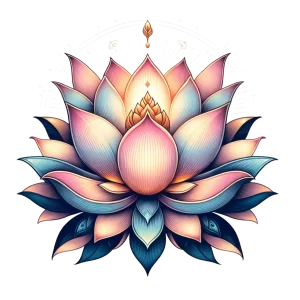
The lotus flower is a particularly important symbol in Buddhism, representing purity, spiritual awakening and wisdom. The lotus often appears in meditation and spiritual practices, and in temple decorations as a symbol of spiritual purity and progress.
Your heart is full of fertile seeds, waiting to sprout. Just as a lotus flower springs from the mire to bloom splendidly, the interaction of the cosmic breath causes the flower of the spirit to bloom and bear fruit in this world. - Morihei Ueshiba (founder of aikido)

There are also examples of spiritual uses of plants in Christianity, such as the use of palm branches on Sundays to commemorate Jesus’ entry into Jerusalem, or the Christmas tree to symbolize the spiritual significance of the holiday season.

In Islam, date palms and other plants play an important role in daily life and religious practices. For example, dates are an important part of the fasting month of Ramadan and have spiritual significance in expressing hospitality and support.
Spirit Plants as Prana’s Natural Allies for Enhanced Vitality
Spiritual plants do not refer solely to herbs. Although many spiritual plants have medicinal properties, the term generally refers to plants that have spiritual, ritual, or sacred significance in a particular culture or spiritual practice. While many of them may also have medicinal properties, their primary purpose is to deepen your meditation, expand your awareness, or facilitate your spiritual journey.
Green Thumb Enlightenment
The Egely Wheel is the Universal Life Energy Meter Device, an easy and fun way to boost prana flow.
Explore and see why the Egely Wheel is so trusted by psychics, healers, and anyone interested in a healthier lifestyle.
Recognizing and consciously using the strong connection between plants and Prana will allow you to proactively participate in your own health and well-being, and deepen your spiritual development. In practical terms, this means that you can make more conscious choices about the environment in which you live by bringing these spiritual plants into your home, workplace, or sacred space for meditation. This will promote positive energy flow and overall harmony.
What is Pranic Healing? Find out here.
Awareness and regulation of Prana can be achieved by working with plants in several ways. On the one hand, the essential oils and aromas of plants can affect people’s emotional and energetic states, promoting relaxation, stress reduction, and meditative states. For example, the scent of sandalwood can help deepen meditation practices, while tulsi purifies the air and increases the body’s vitality. On the other hand, plants directly affect the pranic quality of the environment. Green plants, rich in life force, purify and energize the environment by improving air quality, elevating mood, increasing concentration and making spaces more harmonious and vibrant.
How to Choose your Own Spirit Plant
The key message is that there’s no one-size-fits-all answer to which plants contribute to a positive aura. Instead, it’s a deeply personal journey. You need to keep an open mind and be receptive to the spiritual energies of different plants to find the right plants for your prana. This could happen in various ways: spontaneously encountering a plant in the wild, being drawn to one in a garden center, or even dreaming about a plant. Allow the spirit or essence of the plants to reveal themselves to you in their own time and manner.

Imagine walking through a forest and suddenly coming upon an exceptionally beautiful tree. You stop to take a closer look and feel a deeper connection forming between you and the tree. You sit under the tree to meditate, and as you immerse yourself in the silence, it feels as if the tree is “speaking” to you-not with words, but with feelings, with intuition. When the sight of a tree or other plant suddenly gives you insight into your own life, or you find a solution to a problem, you can consider it a message from the tree. This form of communication, manifesting as inner understanding or intuition, is a way for nature to share its wisdom and support with us.
How to Tune into the Vibrations of Plant Spirits
Plants have their own spirits, or consciousness, with which we can communicate. Through meditation, you can try to connect with these spirits for advice, healing, or deeper spiritual truths. Signs of communication with plant spirits can vary, including intuition, dreams, meditative experiences, and feelings while spending time in nature. For example, you may feel an intuitive attraction to certain plants or receive guidance in your dreams. During meditation or quiet contemplation in nature, you can receive the “messages” of plants through inner sensations or “knowing“. These experiences can help you understand the healing and teaching roles of plants in your life.

When caring for your plants, do so mindfully, as a meditative practice. Approach your plants with full presence and attention. Before you begin, set your intention inwardly. This could be to support the health and growth of the plants, or even to strengthen your own inner peace and connection with nature. Also express your gratitude to the plants for purifying the air, bringing beauty to your surroundings, and providing opportunities for care and connection. This can help strengthen your relationship with the plants and their spiritual energies.
How to Use Spiritual Plants in Sacred Ceremonies and Rituals
In the home, the safe ritual use of plants includes purification ceremonies, healing rituals, and the creation of sacred spaces. Incense has been burned since the dawn of human history for its magical scents, unique meanings, healing and soothing properties. The smoke is considered sacred, purifying and protective, conveying the essence of precious resins, woods or herbs. In the East, lighting incense is considered a generous sacrifice that benefits not only the intended recipient, but all who encounter its fragrance in the room. It’s used to purify rooms, aid meditation, or simply create a soothing atmosphere.
Sage, for example, is known for its cleansing and protective properties and is often used to dispel negative energies and spirits. In addition, place plants in rooms used for meditation or relaxation to enhance their spiritual resonance. For example, the jade plant, lucky bamboo, or money tree can attract positive energy and create harmony in our homes. Multiflora Jasmine is considered the flower of good luck and long, healthy life in Japan. Cocoa ceremonies are also popular, where you can meditate in community, chant, and set intentions supported by cocoa to facilitate emotional release and spiritual upliftment.

Some plants, such as ayahuasca (yage) or psilocybin-containing mushrooms, are used in ritual contexts to facilitate spiritual experiences and expansion of consciousness. Keep in mind that these practices often take place under strictly regulated conditions, led by holders of traditional knowledge.
The Spiritual Language of Plants
In many cultures around the world, plants are revered not only for their beauty or medicinal value, but also for their profound spiritual significance. They serve as sacred bridges that connect us to the natural world, enhance our spiritual practices, infuse our lives with positive energy, and provide spiritual protection. This rich and diverse field of plant-based spirituality reveals the many ways in which flora enriches our spiritual journeys and daily lives, while calling us to a deeper connection with the earth and its wisdom.
Spirit plants open our eyes to a more natural way of being and show us how to connect with nature. Nature is always ready to share its wisdom with us, but we are often so busy with our human responsibilities that we lose our ability to see the amazing beauty around us and the nourishment our spirits need to stay healthy. This approach emphasizes that the relationship between nature and humanity is not a one-way street; interactions between plants and humans are mutually beneficial. This is an opportunity to reevaluate our relationship with nature and recognize how deeply connected we are to the world around us. Let us blend ancient wisdom with contemporary ways of living to enhance our well-being and encourage our physical and mental healing.
3 Sources +
Egely Wheel has strict sourcing guidelines and relies on peer-reviewed studies, academic research institutions, and medical associations. We avoid using tertiary references.
- Füstölő hatása, illatok jelentése – melyik mire jó? – https://karmaguru.hu/
- Plant Spirit Medicine: The Healing Power of Plants – https://www.goodreads.com/
- Plants of Mind and Spirit – https://www.fs.usda.gov/

